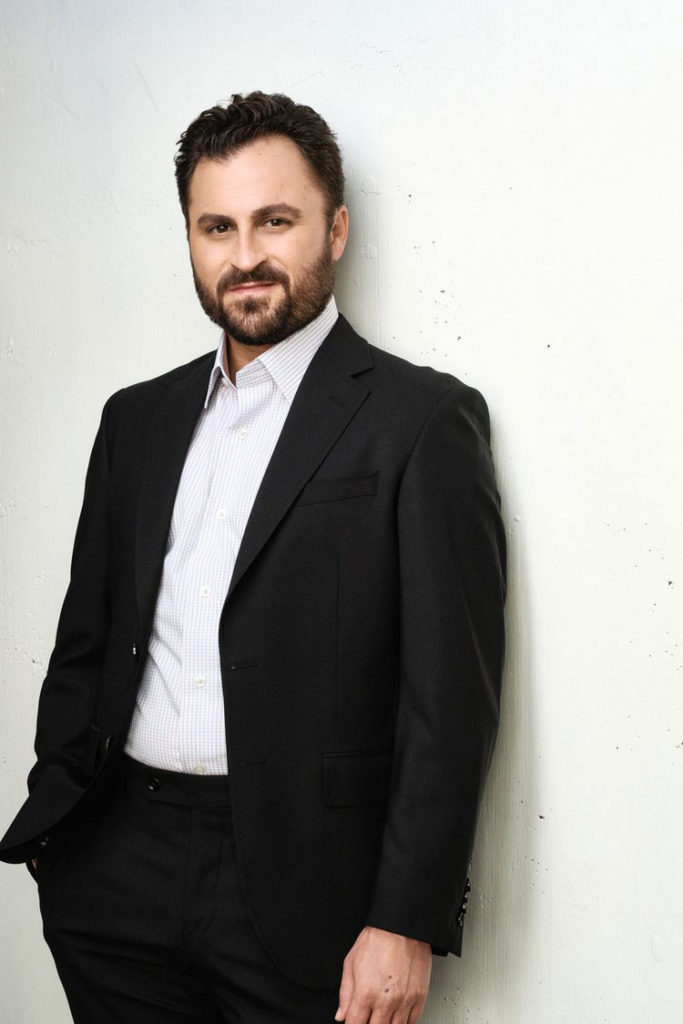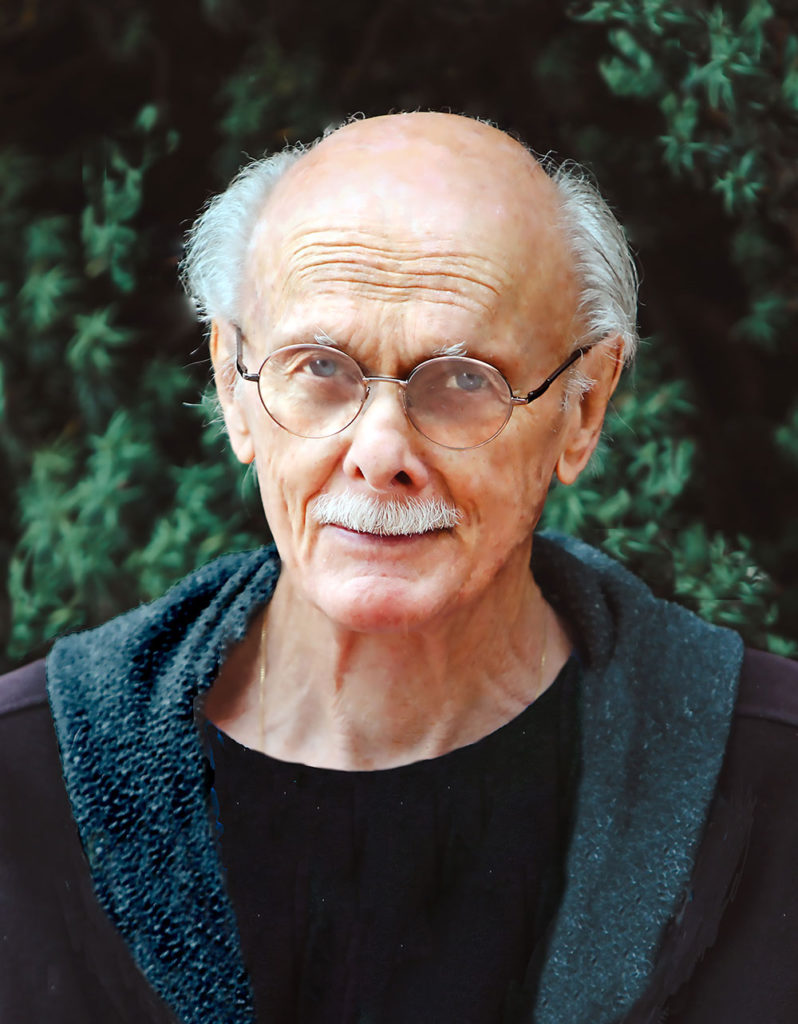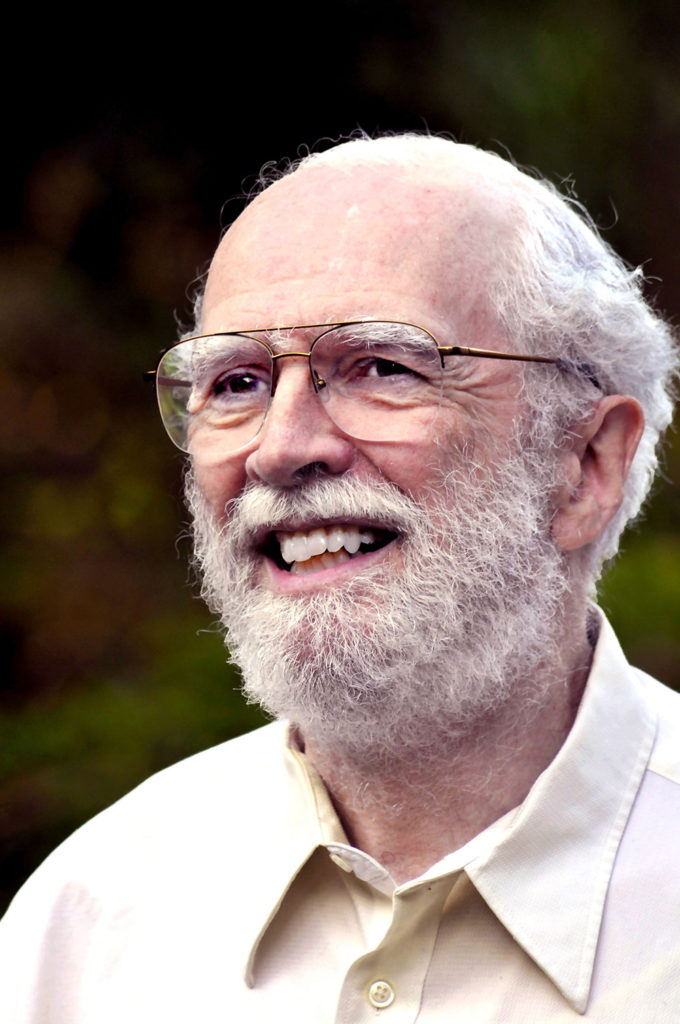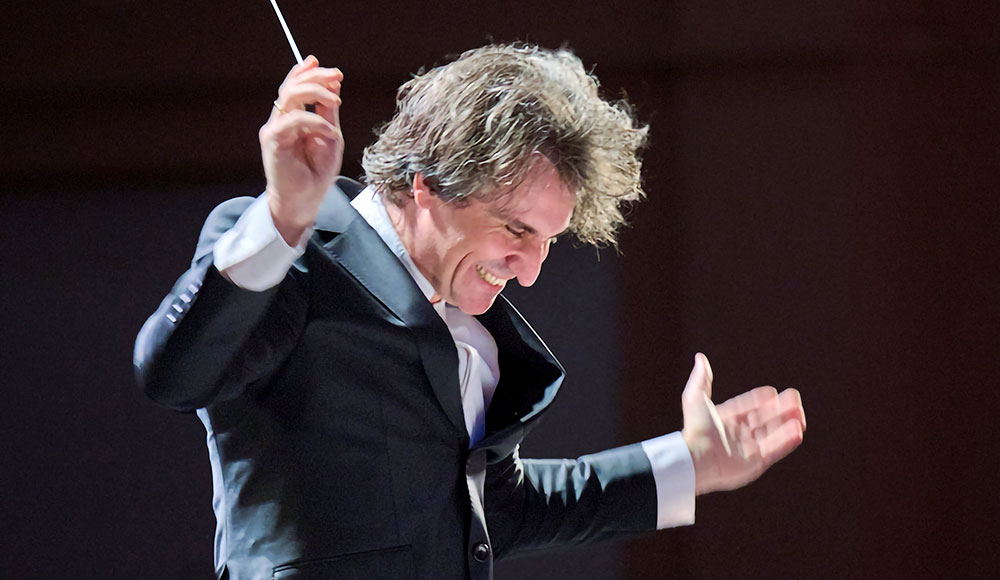The Santa Cruz Symphony kicks off a new year of shimmering music next week. And here’s why you should care. A lot. There’s more than one ingenious local angle in the programming.
With one eye on well-loved classics and another on artistic talent closer to home, the Santa Cruz Symphony’s 2024-25 season kicks off Sept. 21-22 with new music composer Mason Bates’ electrifying Philharmonia Fantastique and Johannes Brahms’ majestic Symphony No. 1, as well as a brand-new arrangement of Ceremonial Music for full orchestra by renowned local composer Martin Gaskell.
The season is, once again, programmed by Music Director Daniel Stewart. “This is one of the great privileges and responsibilities of being a music director,” Stewart happily admits. “And especially in an organization of this size, because we do have more artistic leeway, you know. We can be more flexible in programming; we can find things a little closer to when they’re going to happen and move quickly when opportunities arise.”
Stewart enjoys the challenge.
“It’s a fun artistic position to be in. In the end, I’ve had the great joy of essentially creating an overall arc within a season of arcs through each individual program, and trying to keep the stylistic and geographic and historical diversity very, very consistent throughout. I want each concert to offer opportunities for breathtaking emotional content and things that can change a person’s life in many ways. To experience the wonder of old favorites and discovery in the new.”
Known to Santa Cruz culturati thanks to his frequent residencies in seasons past, composer Mason Bates is a master at balancing the musical high wire. At the edge of the leading edge, his piece is loaded with sensory pyrotechnics and electronic hijinks.

A 25-minute concerto for orchestra and animated film, Philharmonia Fantastique explores the connection between creativity and technology. Working through the distinctive sections of the orchestra, this vibrant musical guide provides a mesmerizing opportunity to lean into the textures and colors of each instrument. (The animated version is a collaboration between Mason Bates, Oscar-winning sound designer Gary Rydstrom and animation director Jim Capobianco.)
Balancing out the program with a reference to the Western canon is Brahms’ first symphony—a gorgeous 19th-century masterwork.
Catching up with Martin Gaskell, who moonlights as a UCSC lecturer in astronomy, we found out more about this transposition of Ceremonial Music, originally scored for brass and organ. “Making an arrangement for full orchestra was indeed a special challenge,” he admitted. “One can take advantage of sounds in an orchestra that cannot be reproduced by an organ. These factors result in the orchestral version of Ceremonial Music having a far different feel.”
The composer explains that the piece was originally written for a friend’s wedding, “a wedding that was going to take place in the large chapel of a seminary. Ceremonies tend to occur in special places.” Well known to many local music groups who have performed his music over the years, Gaskell is looking forward to having his work performed by the Symphony. “I have the advantage of knowing what the Civic Auditorium acoustics are like, what the orchestra and audience setup is like, how the orchestra sounds, and who many of the players will be. Daniel Stewart is a great conductor, better than many conductors of leading orchestras. Always extremely well prepared. I’ve got no anxieties about the concert.”
The season’s second concert, “Adaptations,” starts off Nov. 2–3 with the world premiere of Spin by Cabrillo College music instructor and composer Josef Sekon. Known as a keyboard specialist who founded the St. John Aptos Keyboard Series, Sekon confesses that he has wanted to compose more orchestral work. And the result is Spin, a work showcasing his restless musical imagination. The late music writer Scott MacClelland once described Sekon’s composing style as “whirling and rotating passages in dialogue.” And Sekon agrees. “Textures of various sizes, shapes and colors are my musical goal. Rapid continuous passages, controlled dynamics and glissandi will create the whirling and rotating. The ending promises to be a unique adventure.”

In addition to Sekon’s premiere work, the concert features Antonín Dvořák’s Symphony No. 8 paired with the virtuosity of Santa Cruz Symphony Artist in Residence and Concertmaster Nancy Zhou performing Erich Korngold’s radiant Violin Concerto, a canonical work for violin and orchestra. Those familiar with Dvořák’s haunting New World Symphony will be entranced by this joyful musical description of the natural world, inspired by the folk music of the composer’s native Bohemia.
And before you know it, the winter holidays will be here. On Dec. 14–15 the Holiday Pops Concert will offer the justly popular Nutcracker by Pyotr Ilyich Tchaikovsky as the centerpiece to an event rich in Yuletide offerings. Starting with A Christmas Festival by Leroy Anderson, Maestro Stewart will lead the Symphony orchestra in Polonaise from Christmas Eve by Nikolai Rimsky-Korsakov, then the gorgeous Fantasia on Greensleeves by legendary British composer Ralph Vaughan Williams. And many more delightful musical adventures of the season.
Always an exciting moment on the Symphony calendar is the “Family Concert” on March 2. Finessed once again by soloist and Master of Ceremonies Omari Tau, the program includes Sergei Prokofiev’s Peter and the Wolf, plus youth-centric selections performed in collaboration with community partners. This concert is sure to engage imaginations of all ages.
The season draws toward a close with two concerts of very special interest to local music and theater lovers. “Symphonic Shakespeare” on March 29-30 offers something to appeal to theater lovers. Fresh from the triumph of his first directorial season, Santa Cruz Shakespeare Artistic Director Charles Pasternak will be on hand to set the stage, so to speak, for a program of music devoted to Shakespeare.
“I’m looking very forward to Santa Cruz Shakespeare’s first collaboration with the Santa Cruz Symphony (though certainly not the last!). A few actors and I will be doing some scenes from Midsummer Night’s Dream, Romeo and Juliet, and the Scottish play [Macbeth] to go along with Daniel’s gorgeous choices in Shakespeare-inspired music. Our work will take place mostly in the symphonic margins, but I am excited for one opportunity where I’ll be doing text while the symphony plays.”
The collaboration between theater and music is one that was the rule, rather than the exception, in Shakespeare’s day. In the case of this concert, music and words have been programmed for mutual enhancement.
Maestro Stewart is keen on diversifying participants in his programming. Hence the presence of Charles Pasternak on the March concert program. “This was a concept that I had already articulated to the board my very first year,” Stewart recalls. “So 10 years ago, I was intent on a collaboration with [Santa Cruz] Shakespeare, which is an absolutely fantastic community. Santa Cruz has such wealth, incredible artistic programs, and Shakespeare was certainly among the forefront.
“I’ve invited Paul Whitworth, I’ve known Mike Ryan, and now Charles Pasternak, and we actually featured both Paul and Mike in our Peter and the Wolf programs,” Stewart explains. “We’ll showcase the incredible musical treatments of Shakespeare’s works by some of the greatest composers. You could create a whole festival around his plays. As long as we were doing this, we wanted to feature some of the all-time classics, the Tchaikovsky and one new one by Anna Clyne. It is a real pleasure to work with Charles. I saw his Hamlet—I was so stunned by it.”
From Felix Mendelssohn comes A Midsummer Night’s Dream and from exciting new music composer Anna Clyne—another artist well-known to Santa Cruz audiences for her bold and innovative orchestral impressionism—comes a dramatic musical study of the Bard’s Macbeth titled Sound and Fury. The program concludes with the Fantasy Overture from Pyotr Ilyich Tchaikovsky’s Romeo and Juliet. Expect to be enthralled.
The Symphony’s classical season finale on May 3–4 offers Wolfgang Amadeus Mozart’s incomparable Requiem, featuring the Cabrillo Symphonic Chorus, directed by choral legend Cheryl Anderson and soloists from the Metropolitan Opera. Preceding Mozart’s monumental creation for voices and orchestra will be Stewart’s arrangement of Overture to Dancer in the Dark by Björk. Yes, I know, exciting. But perhaps even more so will be a world premiere of music composed by Stewart.
“It will be a piece for orchestra, orchestra and some other surprising elements, which I’m going to keep as surprises,” he explains. “It’s a 20-minute work for symphony—there will be some special guest collaboration—and it’s about representing what it’s like to be alive at this moment. I think the best thing that great art tends to do is a very direct reflection of the moment in which we live, through the prism of art. And so what I’m most focused on in this particular one is how you make people feel and find balance in the harmony and harmonization where you don’t expect it. Right now we’re involved in this great moment of change, with technology, and with large language models and neural networks.
“I’m very interested in this new intersection of culture and technology and how it relates to our wonderful traditions of music making and of community making. One of the great things that we represent as an orchestra is unity from diversity, that incredible computation of harmony in society and the great cooperative potential of all of us. And so when the world we grew up in no longer exists, this is something that I hope to create optimism about. And also I’m very keen always in my work to make something that’s fun, equally fun for the musicians, exciting, thrilling for the audiences, as well as a very honest representation of things. But it’s by no means so serious and foreign that it’s not also instantly enjoyable. That’s a tall order, of course, but that’s always the bar that we want to set for ourselves.”

Will he be nervous about presenting his new work in public? Maestro Stewart contends that he’s always so caught up in the minutiae, the details of memorizing the scores, rehearsing, “pursuing all those details that that’s all I can think about, and there’s simply no time for any nervousness. I know so many great artists talk about that particular trait, you know, being with them their entire lives. So there’s no telling what different performers will be feeling.”
About the Mozart Requiem, which—full disclosure, I have sung this music with conductor Stewart and the Cabrillo Symphonic Chorus—the music director agrees: “I’m so looking forward to returning to the Mozart here for many good reasons, especially that it’s one of the great, great works of art. It represents so much in the history of music by one of the greatest artists who ever lived. But in addition to all that I relish the fact that it was performed the first season of my first year with the Symphony ten years ago. And so it was my first collaboration with Cheryl Anderson. Since she plans to retire after that concert, it’s going to be just so emotional for me.”
The wildly popular Spring Pops Concert on June 7 will once again offer music themes from the great John Williams. Expect to hum along, but quietly, to new selections from Star Wars, Indiana Jones, Harry Potter, Jurassic Park and many more favorites from the cinematic soundtrack superstar. And before the concert, do not miss the street party, starting at 5pm in front of the Santa Cruz Civic Auditorium. No doubt about it. The Santa Cruz Symphony’s upcoming 2024-25 concert lineup is one of the top reasons why we live in Santa Cruz. Season tickets are a good idea. Visit santa cruz symphony.org.













